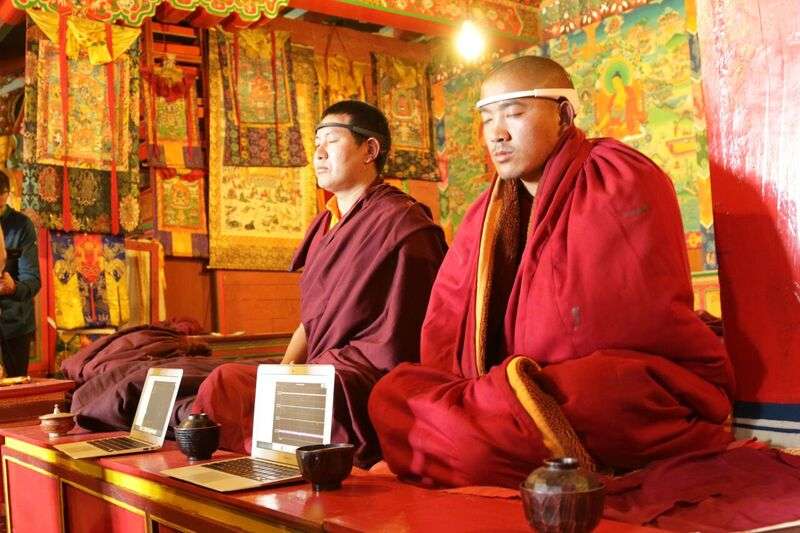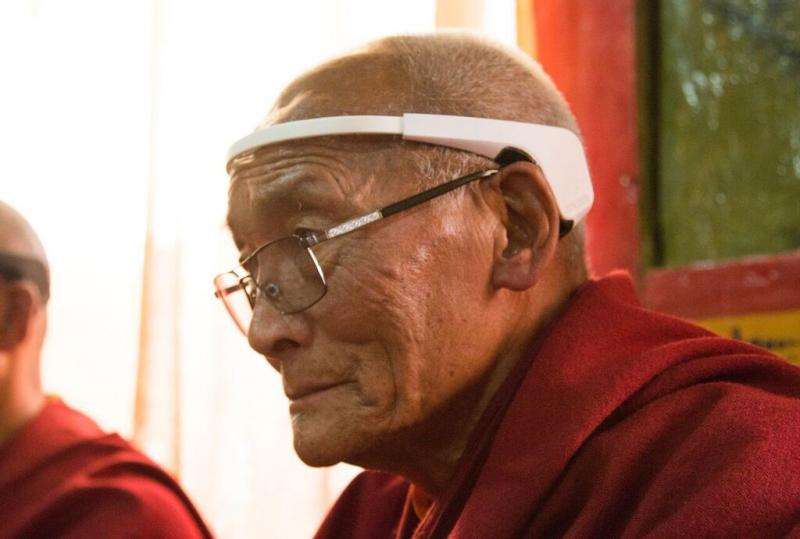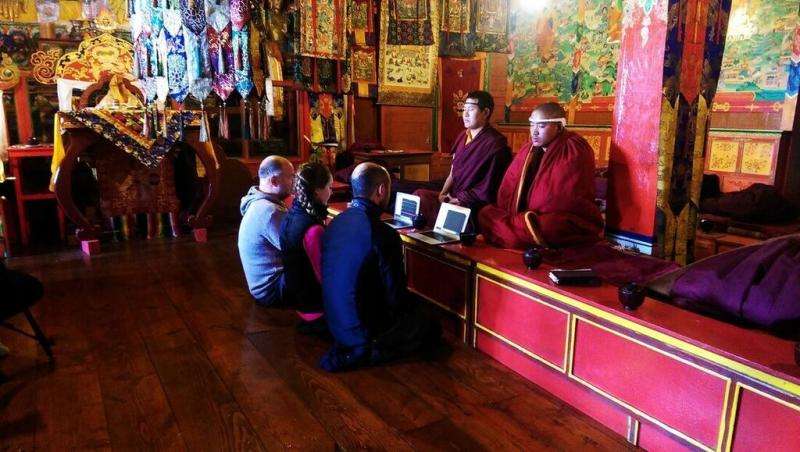Scientists trek to Everest to unlock mysteries of the brain

For decades, scientists have brought monks and others into their labs to measure their brain activity while meditating. Now, for the first time, scientists trekked to the remote Mt. Everest region of Nepal to record the brain activity of meditating Tibetan Buddhist monks in their own monasteries.
They came back with new findings about the human brain—and the benefits of meditation.
The study was conducted in May of this year as part of a University of Victoria (UVic) and University of British Columbia's Okanagan campus (UBCO) joint research venture. The study was led by UVic neuroscientist Olav Krigolson with Gordon Binsted, dean of the Faculty of Health and Social Development at UBCO.
Whether you call it meditation or mindfulness, there's no doubt that humans are able to achieve a "brain state" during which they are happy, thoughtful and focused. "Scientists have quantified this, finding that deep levels of meditation are correlated with differences in electrical signals produced by neurons," says Krigolson. "We have this evidence but no one really knows how it works."
Using a headband-sized electroencephalography (EEG) system, with its software unlocked and modified for research purposes, Krigolson and Binsted set out to provide more insight into what the corresponding neural activity means.
With a sample size of 27 monks from Namche and Tengboche monasteries, Krigolson says "we now have a clearer picture of what's happening during meditation."

In line with previous work, preliminary findings show increases in brain activity during meditation. Specifically, they're seeing increased alpha activity (associated with relaxation), beta activity (associated with focus) and gamma activity (associated with increased synchronicity in the brain) during meditation as opposed to rest.
Further, they found that neural responses to visual stimuli were enhanced after focused attention meditation—a new finding.
"What these preliminary findings tell us, is that there is a potential that intentional brain training techniques such as meditation can have long-lasting effects on brain function," says Binsted. "Moving forward, it will be interesting to see how this and future research can be used in everything from strategies for teachers to the development of mindfulness apps on smartphones."

Concurrent with the monk study, Krigolson and Binsted travelled to Everest Base Camp as part of a larger international group of researchers studying the effects of altitude on bodily functions.
"We hardly know anything about the brain," says Krigolson. "We know very little about how people learn and make decisions. All this research is designed to create a picture some day about how the brain works... and there are currently a lot of missing pieces to the story."
Krigolson and Binsted's research using the portable EEG system in the Himalayas has been an extreme usability field test for other research such as the effects of fatigue in medical, industrial and educational settings.
















